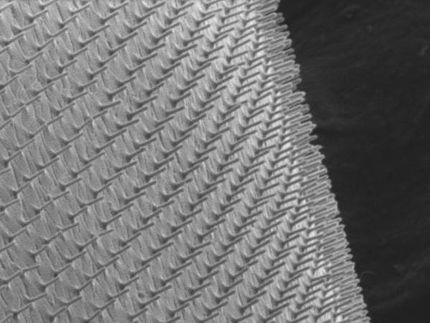'Seeing' the quantum world
Computer animation used to help explain mysteries of quantum physics
Quantum physics is both mysterious and difficult to grasp. Barry Sanders, director of the University of Calgary's Institute for Quantum Information Science, is hoping to change that. Sanders, who is also the iCORE Chair of Quantum Information Science, has produced a four-minute animated movie with a team of animators and scientists. The film is intended for funding agencies, the public, and interdisciplinary teams building quantum computers, so they can see how a quantum computer would work and its underlying science.
For the first time, a detailed description on the making of Sanders' animation — Solid State Quantum Computer in Silicon — was published in the New Journal of Physics . This issue is devoted to the leading uses of visualization in astrophysics, biophysics, geophysics, medical physics and quantum physics and Sanders is one the guest editors for this issue.
"The goal of our animated movie about the quantum computer is to convey to a non-expert audience the nature of quantum computation: its power, how it would work, what it would look like," says Sanders, who also has an article published in Physics World on the making of his four-minute animation.
"The animation incorporates state-of-the-art techniques to show the science and the technology in the most accurate and exciting way possible while being true to the underlying principles of quantum computing," says Sanders. The animated movie was completed last year but the clips have not been publicly distributed before now.
Quantum computers harness the power of atoms and molecules and have the potential to calculate significantly faster than any existing computer could. Some hard computational problems that can't be solved ever by foreseeable computers become easily solved on quantum computers, which could make today's secure communication obsolete. Basic quantum computers that can perform certain calculations exist; but a practical quantum computer is still years away.
"There is a history of simple visualization over the last century to convey quantum concepts," says Sanders. He notes that Erwin Schrödinger introduced his eponymous cat, which is left in a tragic state of being in a superposition of life and death, an illustration of the strangeness of quantum theory. And the uncertainty principle associated with Werner Heisenberg and his fictional gamma ray microscope, has found its way into common English parlance.
"The imagery of the early days of quantum mechanics played a crucial role in understanding and accepting quantum theory. Our work takes this imagery a quantum leap forward by using the state-of-the-art animation techniques to explain clearly and quickly the nature of quantum computing which is, by its very nature, counterintuitive."
Organizations
Other news from the department science

Get the analytics and lab tech industry in your inbox
By submitting this form you agree that LUMITOS AG will send you the newsletter(s) selected above by email. Your data will not be passed on to third parties. Your data will be stored and processed in accordance with our data protection regulations. LUMITOS may contact you by email for the purpose of advertising or market and opinion surveys. You can revoke your consent at any time without giving reasons to LUMITOS AG, Ernst-Augustin-Str. 2, 12489 Berlin, Germany or by e-mail at revoke@lumitos.com with effect for the future. In addition, each email contains a link to unsubscribe from the corresponding newsletter.
























































